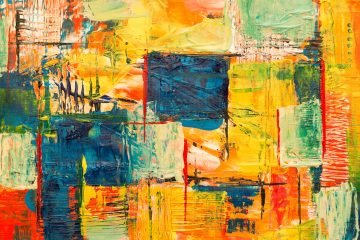India, with its rich cultural tapestry, has nurtured a vibrant art scene for centuries. From ancient cave paintings to intricate miniatures, the country’s artistic heritage is awe-inspiring. Today, Indian paintings continue to evolve, embracing contemporary trends while staying rooted in traditional art forms. This blog takes you on a journey through the kaleidoscope of Indian paintings, delving into the current trends that showcase the fusion of old and new, captivating art enthusiasts both in India and around the world.
1. Modern Indian Art:
Modern Indian art represents the amalgamation of traditional and contemporary elements, creating a unique visual language. Artists experiment with various styles, including abstract, cubist, expressionistic, and figurative, using vibrant colors and bold brushstrokes. Themes of social, political, and cultural relevance resonate through their works, bridging the gap between tradition and modernity.
2. Folk and Tribal Art:
Rooted in rural communities and indigenous cultures, folk and tribal art forms offer a glimpse into India’s rich cultural diversity. Traditions like Warli, Madhubani, Gond, and Patachitra celebrate rural life, mythology, and nature. These art forms feature intricate patterns, geometric designs, and vivid colors, narrating stories and preserving cultural heritage. Today, folk and tribal art gain recognition in both national and international art circles.
3. Street Art:
Indian cities are witnessing a resurgence of street art, transforming public spaces into vibrant canvases. Street artists create large-scale murals, graffiti, and installations, using walls as their medium. This style provides a platform for social commentary, addressing gender equality, environmental issues, and political activism. Street art not only beautifies the urban landscape but also sparks public engagement with art.
4. Digital Art:
The advent of technology has opened up new avenues for artistic expression, leading to the emergence of digital art in India. Artists blend traditional techniques with digital tools to create visually captivating and conceptually intriguing pieces. Ranging from futuristic to minimalist and abstract, digital art offers limitless possibilities for experimentation, pushing the boundaries of traditional mediums.
5. Contemporary Miniature Art:
Drawing inspiration from the rich tradition of miniature painting, contemporary artists revive this ancient art form with a modern twist. They create intricate and detailed compositions on a small scale, using traditional materials like handmade paper and natural pigments. While still honoring historical themes, contemporary miniature art explores contemporary subject matter, fusing the past with the present.
6. Installation and Mixed Media:
Installation art and mixed media are gaining popularity in India’s contemporary art landscape. Artists employ various materials, including found objects, textiles, metal, and wood, to create immersive and thought-provoking installations. These artworks explore spatial relationships, societal issues, and personal narratives, challenging traditional art forms and engaging viewers in a multi-sensory experience.
Conclusion:
Indian paintings reflect the cultural richness and artistic dynamism of the country. The contemporary trends in Indian artwork showcase a fusion of traditional techniques and modern sensibilities. From the vibrant strokes of modern Indian art to the mesmerizing narratives of folk and tribal art, from the bold statements of street art to the innovative possibilities of digital art, Indian paintings continue to captivate and inspire. As artists explore new mediums and themes, the world of Indian art will undoubtedly evolve, creating an even more breathtaking panorama of artistic expression.


 Protected by Patchstack
Protected by Patchstack
0 Comments